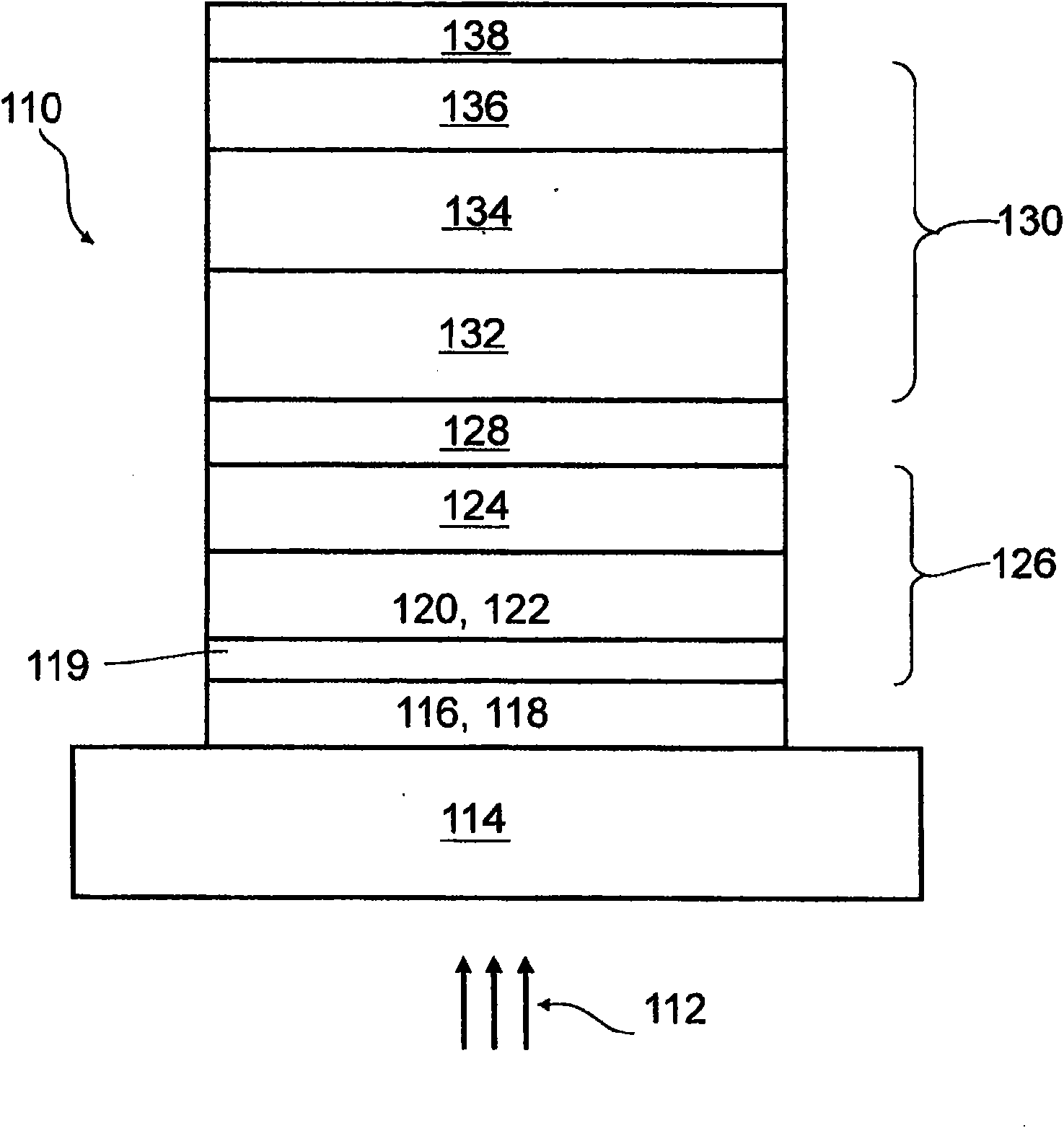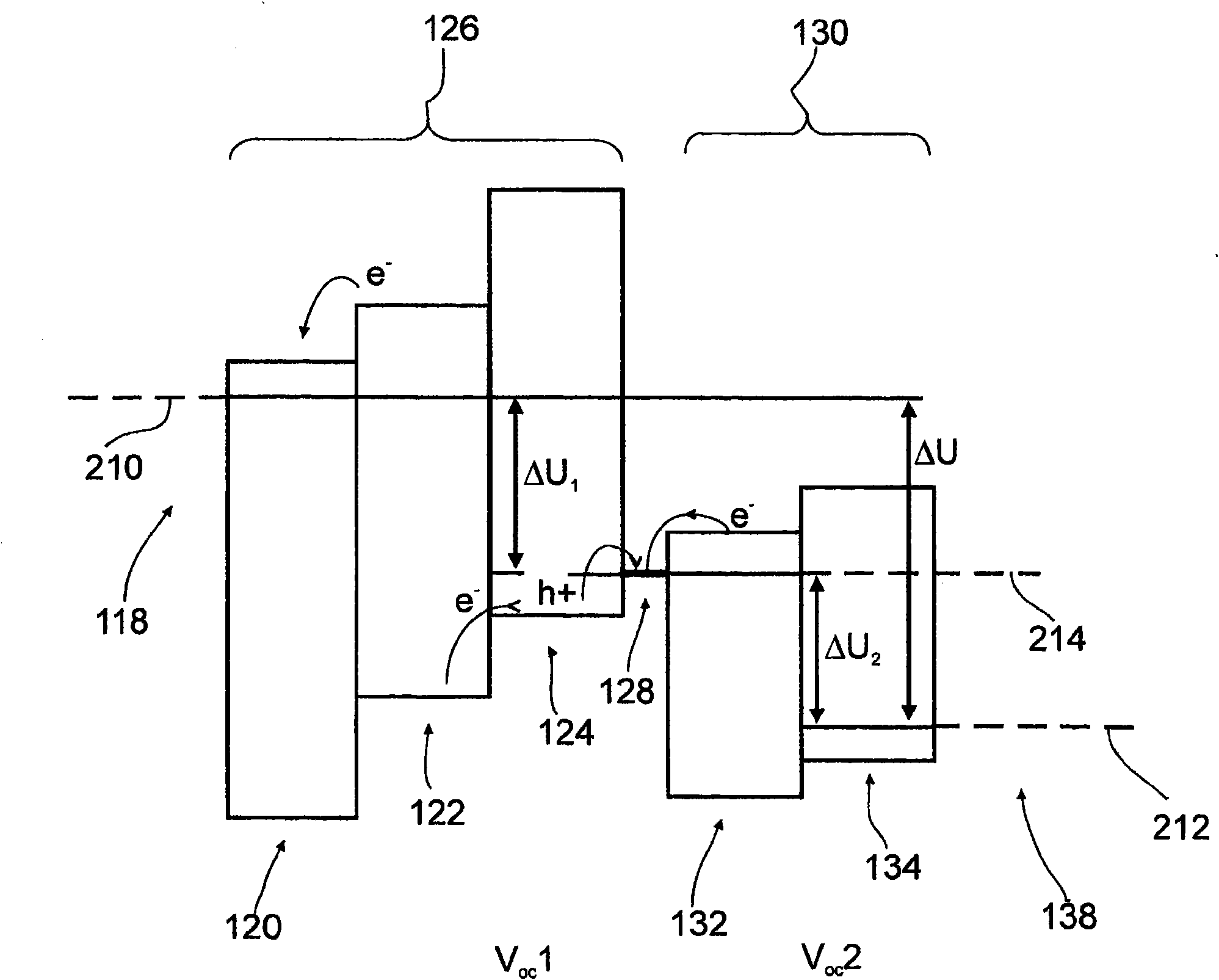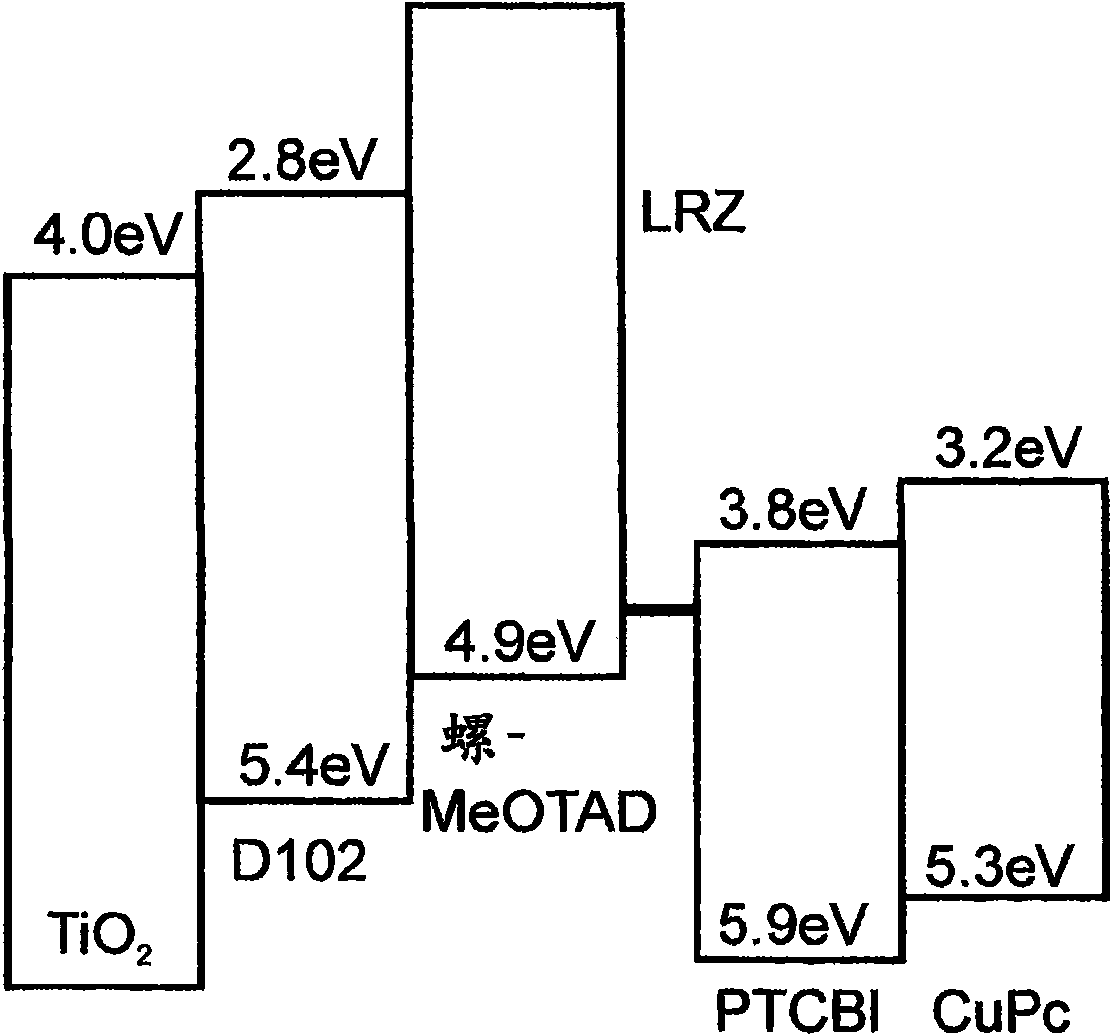Photovoltaic tandem cell
A battery and photovoltaic element technology, applied in photovoltaic power generation, circuits, capacitors, etc., can solve the problems of harmful use of liquid electrolyte, unknown photocathode, low voltage, etc., and achieve the effect of simplifying the battery structure
- Summary
- Abstract
- Description
- Claims
- Application Information
AI Technical Summary
Problems solved by technology
Method used
Image
Examples
example 1
[0160] figure 1 A first example of a tandem solar cell 110 is shown. The tandem solar cell 110 includes a support 114 that is substantially transparent to light 112, preferably solar radiation. As already partially explained above, the support 114 may be, for example, a glass substrate, a transparent plastic substrate (eg, a polyethylene sheet, a PET sheet, a PTFE sheet, or other types of plastic), or a laminate of such materials, or other materials. . It should be noted that in different figure 1 In the structure of the exemplary structure represented, for example, in which figure 1 In structures where the solar incidence is from above, the transparent support 114 is not necessary, so other types of supports may be used for the structure. However, in figure 1 In the example shown, transparency of the support 114 is necessary.
[0161] In this example, a transparent conductive oxide (TCO) 116 is applied to the support 114 . It is assumed below that the TCO 116 in th...
example 2
[0195] Figure 5 with 6 Another example of a tandem solar cell 110 of the present invention is shown. Figure 5 shown with figure 1 Schematic illustration of a similar layer structure. Image 6 shows the test data for this structure, which corresponds to Figure 4 Figures in are similar.
[0196] Figure 5 The layer structure shown in first essentially corresponds to the figure 1 The layer structure, so for the functions of the layers shown, you can basically refer to figure 1 description of. The metal selection and layer fabrication sequences are described below. according to Figure 5 Instance of the layer structure with figure 1 The significant difference is that an electron transport layer 129 has been inserted between the charge recombination region 128 and the organic solar cell 130 (here, the acceptor material 132 of the organic solar cell 130) in order to improve the connection between the charge recombination region 128 and the organic solar cell 130. e...
PUM
| Property | Measurement | Unit |
|---|---|---|
| thickness | aaaaa | aaaaa |
| thickness | aaaaa | aaaaa |
| particle size | aaaaa | aaaaa |
Abstract
Description
Claims
Application Information
 Login to View More
Login to View More - R&D
- Intellectual Property
- Life Sciences
- Materials
- Tech Scout
- Unparalleled Data Quality
- Higher Quality Content
- 60% Fewer Hallucinations
Browse by: Latest US Patents, China's latest patents, Technical Efficacy Thesaurus, Application Domain, Technology Topic, Popular Technical Reports.
© 2025 PatSnap. All rights reserved.Legal|Privacy policy|Modern Slavery Act Transparency Statement|Sitemap|About US| Contact US: help@patsnap.com



